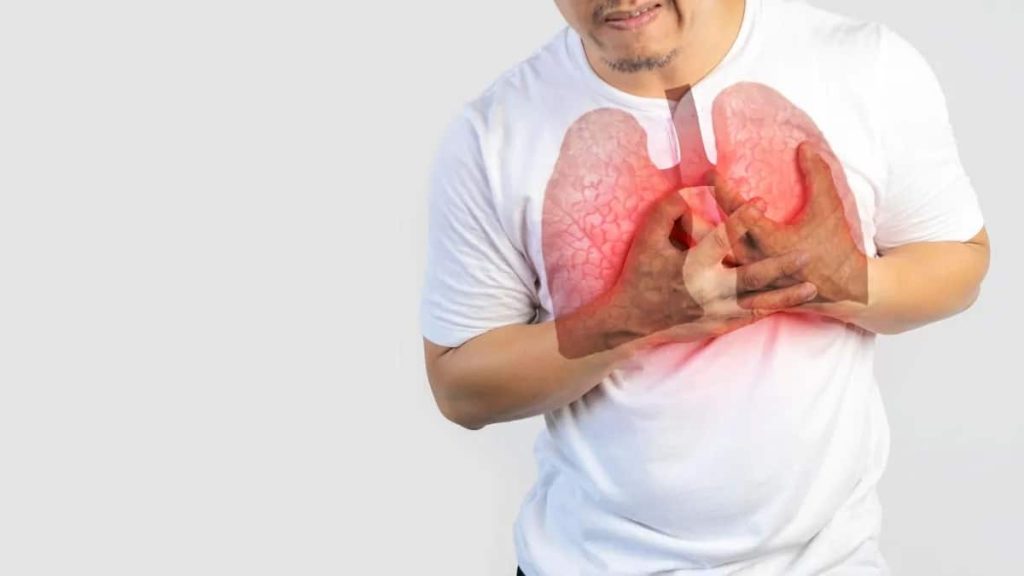Legionnaires’ disease is a severe form of pneumonia (lung infection) caused by bacteria belonging to the genus Legionella. While several Legionella species can cause illness, Legionella pneumophila is the most common culprit. This potentially fatal infection requires prompt diagnosis and treatment to prevent serious complications.

Understanding Legionnaires’ Disease: What You Need to Know
Legionnaires’ disease derives its name from a 1976 outbreak that occurred at an American Legion convention in Philadelphia. It is an important public health concern, as it can lead to significant morbidity and mortality, especially in individuals with compromised immune systems or underlying health conditions.
Legionnaires’ Disease Symptoms
Symptoms of Legionnaires’ disease typically appear 2 to 10 days after exposure to Legionella bacteria. They can include:
- High fever (often exceeding 104°F/40°C): This is usually one of the first noticeable symptoms.
- Cough: The cough is often dry initially but can progress to produce phlegm.
- Muscle aches
- Headache
- Shortness of breath: Breathing difficulties can become severe as the infection progresses.
- Chest pain
- Confusion or mental changes
- Gastrointestinal symptoms: Diarrhea, nausea, and vomiting are also common.
How is Legionnaires’ Disease Spread?
Legionnaires’ disease is contracted by inhaling microscopic water droplets containing Legionella bacteria. The bacteria thrive in warm, stagnant water, such as that found in:
- Cooling towers (used in air conditioning systems)
- Hot tubs and spas
- Decorative fountains
- Water systems in large buildings (hotels, hospitals, etc.)
- Showerheads and faucets
Important Note: Legionnaires’ disease is not spread from person to person.
Legionnaires’ Disease Diagnosis and Treatment
Diagnosing Legionnaires’ disease typically involves a combination of methods:
- Chest X-ray: Reveals signs of pneumonia.
- Urine test: Detects Legionella antigens in the urine.
- Sputum culture: Identifies the specific bacteria present in the respiratory tract.
- Blood tests: Assess the severity of the infection and look for signs of complications.
Treatment for Legionnaires’ disease focuses on antibiotic therapy:
- Macrolides (azithromycin, clarithromycin): These are typically the first-line antibiotics.
- Fluoroquinolones (levofloxacin, ciprofloxacin): May be used in severe cases or when macrolides are not appropriate.
Hospitalization may be necessary to provide supportive care, such as oxygen therapy, respiratory support, and intravenous fluids.
MedicW Recommendations: Medical Consumables for Legionnaires’ Disease Management
- Sampling Swabs: MedicW’s sterile nasopharyngeal swabs and sputum collection kits are essential for collecting samples for laboratory testing to diagnose Legionnaires’ disease.
- Respiratory Protection: N95 masks and respirators are crucial for healthcare workers and caregivers to prevent inhaling Legionella-containing aerosols.
- Protective Apparel: Gloves, gowns, and eye protection are recommended when handling samples from suspected or confirmed Legionnaires’ disease patients.
- Syringes: Used for administering antibiotics and other medications to patients.
Preventing Legionnaires’ Disease
Prevention of Legionnaires’ disease involves controlling and eliminating the sources of Legionella bacteria:
- Regular cleaning and disinfection: Water systems, cooling towers, hot tubs, and other potential sources should be disinfected regularly according to established guidelines.
- Water temperature control: Maintain hot water systems at temperatures above 140°F (60°C) and cold water systems below 68°F (20°C).
- Water flow maintenance: Ensure proper water flow to prevent stagnation.
- Prevent scale buildup and biofilm formation: These can provide a haven for Legionella bacteria to multiply.
Legionnaires’ Disease: Frequently Asked Questions
1. Can I get Legionnaires’ disease from my home shower?
Answer: It is possible but rare to get Legionnaires’ disease from your home shower. Regular cleaning and maintenance of your showerhead, particularly using disinfectant, can help reduce the risk.
2. Who is at highest risk of Legionnaires’ disease?
Answer: People over 50, smokers, individuals with chronic lung diseases (like COPD), people with weakened immune systems, and those with underlying health conditions (diabetes, kidney disease) are at higher risk.
3. How serious is Legionnaires’ disease?
Answer: Legionnaires’ disease can be very serious and even fatal, especially if not diagnosed and treated promptly.
4. Is Legionnaires’ disease common?
Answer: Although Legionnaires’ disease is less common than other types of pneumonia, it is still a significant public health concern, causing thousands of cases annually.
5. What should I do if I think I might have Legionnaires’ disease?
Answer: Seek immediate medical attention if you develop symptoms, especially if you have a history of exposure to potential sources of Legionella bacteria (e.g., recent travel, staying in a hotel, etc.).
6. Can Legionnaires’ disease be cured?
Answer: Yes, Legionnaires’ disease can be successfully treated with antibiotics, particularly when caught early.
Legionnaires’ Disease: Conclusion
Legionnaires’ disease is a serious but preventable respiratory infection. Maintaining properly disinfected water systems and taking precautions when traveling or using facilities with potentially contaminated water are essential steps to protect yourself and others from this potentially life-threatening illness.
MedicW’s commitment to providing high-quality medical consumables, including sampling swabs, diagnostic kits, and protective apparel, empowers healthcare professionals and institutions to combat the threat of Legionnaires’ disease through effective diagnosis, treatment, and preventative measures.
We urge everyone to:
- Be aware of the risks and symptoms of Legionnaires’ disease.
- Support the implementation of water safety measures in public and private facilities.
- Seek prompt medical attention if you suspect you might be infected.
By understanding Legionnaires’ disease and taking appropriate steps to prevent its spread, we can contribute to a healthier and safer environment for everyone.
MedicW is committed to being your trusted partner in providing high-quality medical consumables. Explore our comprehensive range of products and discover how we can support your healthcare needs. Visit us at medicw.com or contact our team at [email protected].
Link to this article: Understanding and Prevention Legionnaires’ Disease
